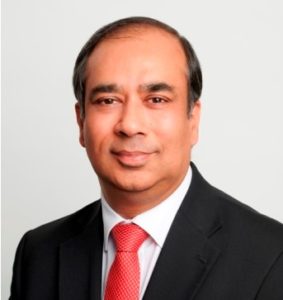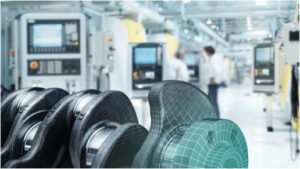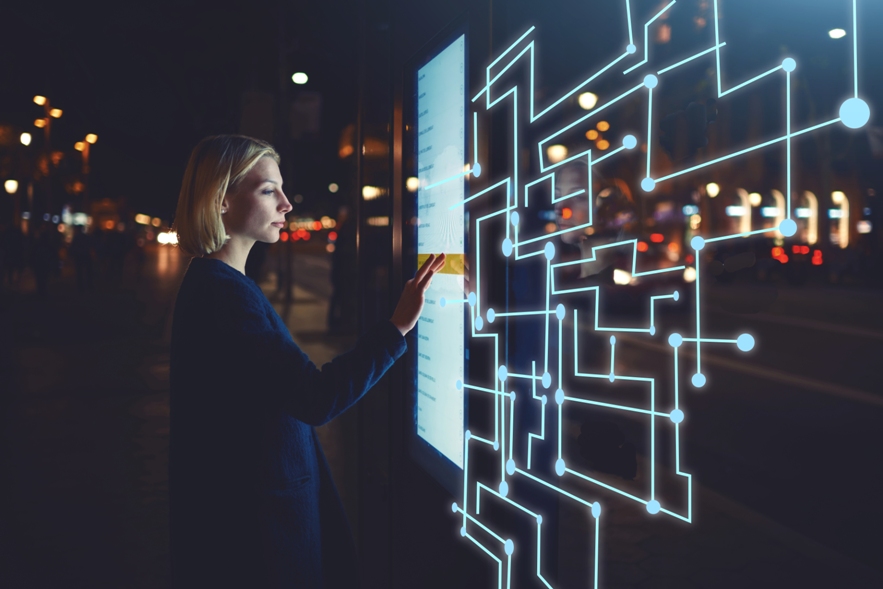Siemens recently held its “Innovation Day 2019” in Mumbai where top management personnel as well as technical experts gave detailed presentations on digitization, Internet of Things (IoT), artificial intelligence and related topics. It was very clear that digitalization—as a philosophy with varying implications—is the way forward. From running machines efficiently to having a cleaner and healthier world, digitalization could positively influence human life, in ways that are quite unimaginable right now. This story by Venugopal Pillai is based on some striking points made during the presentations, and it attempts to bring readers a little closer to this all-pervasive phenomenon of digitalization.
The terms digitalization, artificial intelligence, Internet of Things (IoT) have found widespread usage in recent years. However, these terms can neither be precisely defined nor can their scope be fully captured. These terms also interrelate and overlap. It is best to construe these as philosophies or cultures that bring efficiencies to machines and operational processes.
Going by popular explanations, digitalization is the integration of digital technologies into everyday life by the digitization of everything that can be digitized. Digitalization can also be interpreted as the use of digital technologies to change a business model or to develop new business models. Here, digitization (different from digitalization) is an interrelated concept that refers to the actual conversion of analog data into digital bits of series of 1s and 0s, which is the binary language. Digitalization is the foundation of extended ideas like artificial intelligence (AI) and Internet of Things (IoT).
Artificial intelligence (AI) may be explained as the simulation of human intelligence processes by machines, especially computer systems. These processes include learning (the acquisition of information and rules for using the information), reasoning (using rules to reach approximate or definite conclusions) and self-correction.
Internet of Things (IoT) is the extension of Internet connectivity into physical devices and everyday objects. Embedded with electronics, Internet connectivity, and other forms of hardware, these devices can communicate and interact with others over the Internet, and they can be remotely monitored and controlled. In the IoT scheme, objects so connected have the ability to “talk” to each other.

Sunil Mathur, MD & CEO, Siemens Ltd, extolled the virtues of digitalization and even provided real examples of how digitalization has brought in unsurpassed efficiency within Siemens itself. “The global arena is implementing digitalization. We already have factories and manufacturing facilities that are speaking of 99.99 per cent productivity and quality, thanks to digitalization,” Mathur noted.
“India cannot afford to be left behind in digitalization,” he asserted. In a very general sense, India is planning huge capital expenditure across various sectors and this is bound to increase the volume of goods and services. However, not all of this may be consumed internally, which is why India would need to tap the exports market. Global players are already embracing digitalization, which is turning their manufacturing processes efficient and their goods, price competitive. If India has to stay afloat in the global market, it will need to achieve overall efficiency. “It is imperative for us in the country to understand what digitalization could mean to us,” was how the Siemens CEO & MD urged the audience, which included representatives of several companies in the manufacturing and services sectors, to take the first step towards digitalization.
Mathur provided an interesting example of how digitalization positively influenced one of its local manufacturing plants. The case in point was Siemens’ Kalwa Works in Maharashtra—a 50-year old brownfield plant that makes a variety of products including LV switchgear and motors. Siemens decided to digitize one of the product lines—that of low-voltage contactors. Post digitalization, Siemens was able to go from 77 variants of contactors, on three manufacturing lines, to as many as 180 variants in just one manufacturing line. The production cycle time dropped drastically from 21 seconds to just 9 seconds. Further, the number of quality checks rose from 22 before digitalization, to 68. With the result, Siemens could expand its offering within India and also export contactors, due to the much superior quality achieved due to digitalization.
“I think this is really the proof of what digitalization can do for not only for large companies but also for small and medium enterprises. Digitalization will bring in a huge benefit for the millions of small and medium enterprises in the country,” Sunil Mathur upheld.
Siemens is working on a project awarded by Bane NOR SF–the state-owned railway authority in Norway. The new system, scheduled to complete by 2034, will eliminate physical devices used in the current signaling system and instead use complex software that will sit on the cloud. The entire Norwegian rail network, comprising around 4,200 track km and 375 stations, will be renewed into a full digital IP based system – a real ‘Internet of Things’ system. The new railway infrastructure will be equipped with “Trainguard” – a European Train Control System (ETCS) Level 2. This will eliminate all the 11,200 main signals! With the ETCS as a cab-signaling system, main signals are no longer required along the lines since signal aspects are directly transferred to the driver’s cab. This will make railway operation more efficient.
Speed and Scale

Dr Roland Busch, Chief Operating Officer, Chief Technology Officer and Member of the Managing Board of Siemens AG, gave a detailed presentation on the capabilities of Siemens in the field of digitalization. Dr Busch stressed that Siemens was continually trying to transformer innovation into a strategic advantage for its customers. While giving a host of examples of how digitalization has transformed services, Dr Busch assured the gathering that traditional fields like electrical and mechanical engineering will still be in high demand, the tilt towards digitalization notwithstanding.
Offering digitalization solutions is a very customer-centric activity, Dr Busch felt. He added that “co-creation” was one of the several factors that can spell success in the digital transformation age. The term “co-creation” refers to the process where the supplier creates digital solutions with active participation of the customer in that the customer’s knowledge comes into play. Digitalization is about bringing value to the customer. This could include better performance on various parameters like time-to-market, efficiency, productivity, uptime of assets, etc, explained Dr Busch.
Critical parts that go into machines—take for example sensors, actuators, contactors, etc—can potentially undergo a lot of positive change due to digitalization. These parts can get highly efficient. Citing an example, Dr Busch spoke of gas turbines. They need to always run optimally under the given operating conditions. This could mean ensuring that the NOx levels are always below a certain threshold, ensuring that the blades do not get too hot, etc. Siemens proposed the idea of gas turbines running autonomously based on algorithms, which means AI-0perated gas turbines. Thus Siemens developed software that sits on the cloud. This software is downloaded on the gas turbine, which is equipped with around 1,500 sensors, and the turbine now runs autonomously based on the algorithms. This has resulted in gas turbines now running at NOx levels that are 15-20 per cent lower than prescribed levels. Whenever the software is updated, which is a continual process, the turbine will always have access to it as the software sits on cloud.
Acceptance of IoT
In her presentation on IoT during Siemens Innovation Day 2019, Bettina Rotermund, Head of Marketing & Sales Support, Siemens IoT Services, discussed the various advantages of IoT. She stressed on the wide-ranging implications of IoT, observing that IoT could positively impact a broad spectrum of sectors like agriculture, pharmaceuticals, industrial manufacturing, healthcare, etc. In the manufacturing sector, sensors embedded in machinery can help understanding the exact status of the machine, in real time. This could help in reducing the failure rate of machinery and also plan the “out-time”. Even in a sector like agriculture, sensors placed in soil can help understand the exact soil quality. With this, the usage of chemical fertilizers can be optimized. This in turn could positive affect the quality of agriculture produce.
Internet of Things (IoT) is also explained as the deployment of information technology (IT) on the operational technology (OT). This is how the catchy expression IT + OT = IoT has evolved. OT may be understood as the computing systems (software and hardware) that are used to control and manage physical devices like valves, pumps, etc. It is estimated that by 2025, some 80 billion devices will be connected globally, indicating the immense role that IoT is and will be playing in our lives.
A very striking point made by Rotermund was that despite the fact that deployment of IoT can improve efficiency, the acceptance of IoT was still very low. It has been estimated that only 30 per cent of companies (or roughly 1 out of every 3) was deploying IoT solutions. In order to understand the reasons of this rather low acceptance of IoT, Siemens recently sponsored a survey conducted by Harvard Business Review (HBR). The results of this Siemens HBR Pulse Survey, conducted on 741 global executives, threw up some interesting findings:
- 74 per cent of respondents said that IoT will become a competitive differentiator in their markets over the next two years
- 70 per cent strongly agreed that the need to adopt IoT technology will grow over the next two years
- 46 per cent were uncertain on how to gain business value from the data and analyses they collect from using IoT technology
- 45 per cent did not know where to begin to adopt IoT technology
- 40 per cent of C-level executives (CFO, COO, etc) pinpointed difficulties in finding external advisors with IoT experience
- 34 per cent of the executives said that they struggle to find external advisors with an understanding of their industry
The top four business benefits why executives would choose IoT include: enhancing customer service and satisfaction; improving the quality of products and services; developing new products and services; and, reducing operational costs. Creating new business models was also an IoT-related benefit that was subscribed to by 37 per cent of the respondents.
Cybersecurity
 As digitalization progresses, the need for protecting computer systems and data becomes very important. In the IoT culture, computer programs are stored in the cloud which makes it very vulnerable to what is called cyber attacks. Cybersecurity, as explained by leading US-based computer software company Cisco Systems Inc, is is the practice of protecting systems, networks, and programs from digital attacks. These cyber attacks are usually aimed at accessing, changing, or destroying sensitive information; extorting money from users; or interrupting normal business processes. Implementing effective cybersecurity measures is particularly challenging today because there are more devices than people, and attackers are becoming more innovative. At the Siemens Innovation Day 2019, all speakers stressed on the need for cybersecurity, and underscored it as the most important aspect of digitalization.
As digitalization progresses, the need for protecting computer systems and data becomes very important. In the IoT culture, computer programs are stored in the cloud which makes it very vulnerable to what is called cyber attacks. Cybersecurity, as explained by leading US-based computer software company Cisco Systems Inc, is is the practice of protecting systems, networks, and programs from digital attacks. These cyber attacks are usually aimed at accessing, changing, or destroying sensitive information; extorting money from users; or interrupting normal business processes. Implementing effective cybersecurity measures is particularly challenging today because there are more devices than people, and attackers are becoming more innovative. At the Siemens Innovation Day 2019, all speakers stressed on the need for cybersecurity, and underscored it as the most important aspect of digitalization.
It is pertinent to observe that Siemens has embarked on a journey to make all its power transmission products digitally connected, which is to say IoT-enabled. In 2018, Siemens launched digitally-connected power transformers as “Sensformer” and more recently, it rolled out high-voltage IoT-equipped switchgear called “Sensgear.” Over the next two years, Siemens has targeted to deliver all its power transmission products with digital connectivity. In this context, cybersecurity would be critical. In an exclusive interaction with T&D India, Dr Beatrix Natter, the CEO of Siemens Power Transmission Products, explained, “SensgearTM is much more than just a monitoring system. It enables T&D system owners and operators to increase performance, improve operational safety and environmental performance reducing operating costs and risks. We are well aware that cybersecurity is a critical factor in the success of digitalization. Therefore, we use end-to-end encryption when transmitting sensor data from Siemens substations to the cloud. Sensformer® and SensgearTM come with state-of-the-art IT security technology that complies with all relevant standards.”



